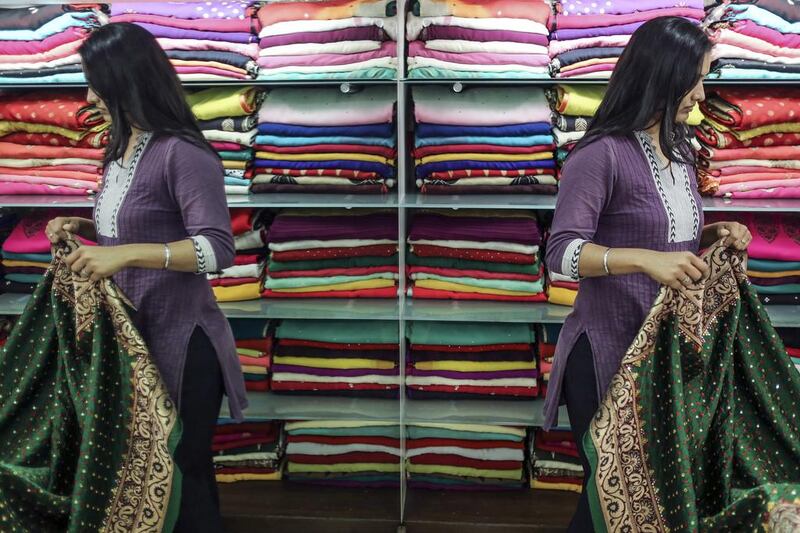identity
There are many ways to come at the concept called identity. Aesthetics is one of them. Every culture has a distinct aesthetic. Chinese poetry describes eyebrows like willow leaves; Japanese paintings celebrate women with white skin and rosebud-shaped lips; the Arab world emphasises the beauty of a woman’s eyes; Europeans pay attention to cut and silhouette and how it complements a woman’s body.
India, in contrast, is a culture of drapery, not tailoring. Even though we have fantastic tailors, we love hand-woven textiles. Women of my mother’s generation called it “the purity of the unstitched cloth that has not been sullied by a needle and thread”. Our saris are woven, as are our pashminas and the dupattas that we wear over our tunics.
That is the Indian aesthetic and I think it’s remarkable – because I cannot think of any culture that has this historical link to textiles the way early humans designed them. If you go to the Louvre or to the Metropolitan Museum in New York and look at ancient Greek, Roman and Egyptian art, you will see humans wearing draped cloth. The men and women wear textiles that are draped just like we Indians drape saris and, for the men, lungis.
Today, the Greeks, Romans and Egyptians have all migrated to tailored clothes. Nobody is wearing a toga on the streets of Rome these days. India is arguably the only civilisation that still has a vibrant culture of drapery, with a living connection to textiles that goes back tens of centuries. Even the Arabian abaya, which comes close in terms of draped cloth, is stitched, unlike the sari.
This is why I try to wear a sari as often as I can. Frankly, I am not very comfortable in it. Not as comfortable as my mother anyway. The women from previous generation could work and sleep in saris. But I love this tactile connection that I have with history, with my heritage and, indeed, the history of all textiles across all civilisations. The sari is a living emblem of the human connection with unstitched cloth.
Anthropologists look at things that are unique and specific to a particular culture. However, few researchers talk about the aesthetics. India is a culture of ornamentation. You can look at Kerala paintings – by Raja Ravi Varma, for example – and get an idea of the Indian fashion sense as it percolates down the centuries.
Take anklets, for example. They are distinctive Indian ornaments that are rarely found in other parts of the world. India has jewellery for pretty much every part of the body: the forehead, ears, nose and even ankles. Anklets jingle as a woman walks. My feminist Indian friends say that it is so the husband can keep tabs on his wife as she walks around the house. I think that the reasons are less about power and more about sensuality. The sweet sound of jingling anklets is a good way to drive out traffic noises. Anklets are also zen in that the sound of the anklets focuses your mind as you walk.
Modern designers fetishise the leg. Shoe designers like Manolo Blahnik or Jimmy Choo know that the arch of the heel is beautiful. They design their stilettos to emphasise this arch. But western designers have forgotten about the ankle and making it beautiful with an anklet. Indians didn’t forget.
In that sense, India is not like Scandinavia with its “less is more” aesthetic; nor it is like Japanese minimalism. We have a “more is more” aesthetic. For global business travellers who work in multiple cultures, there are many ways to understand the people that they interact with. One way is to observe a culture’s aesthetic.
Shoba Narayan is the author of Return to India: a memoir





